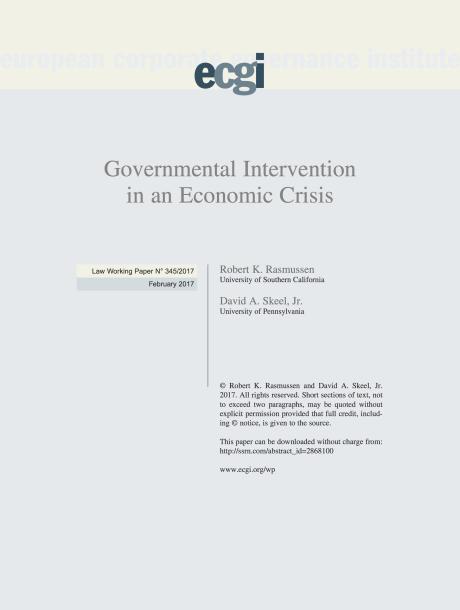
Governmental Intervention in an Economic Crisis
Abstract
This paper articulates a framework both for assessing the various government bailouts that took place at the onset of Great Recession and for guiding future rescue efforts when they become necessary. The goals for those engineering a bailout should be to be as transparent as possible, to articulate clearly the reason for the intervention, to respect existing priorities among investors, to exercise control only at the top level where such efforts can be seen by the public, and to exit as soon as possible. By these metrics, some of the recent bailouts should be applauded, while others fell short. We also explore the related question of what level of judicial scrutiny is appropriate for government actions taken during a bailout. We eschew the extremes of no judicial review on the one hand and full recourse to the courts on the other. Courts need to avoid interfering in a time of crisis, yet, when normalcy has returned, they should measure the actions taken against applicable legislative and constitutional requirements.










